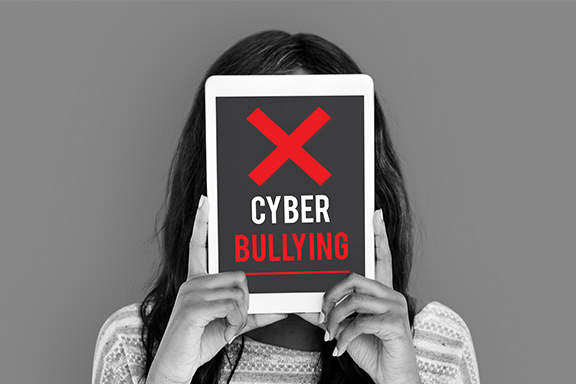
While computers, technology, and internet access in the classroom have enhanced education in unprecedented ways, they have also made students more vulnerable to troubling and sometimes dangerous cyberbullying behavior. According to StopBullying.gov, cyberbullying is:
bullying that takes place over digital devices like cell phones, computers, and tablets. Cyberbullying can occur through SMS, Text, and apps, or online in social media, forums, or gaming where people can view, participate in, or share content. Cyberbullying includes sending, posting, or sharing negative, harmful, false, or mean content about someone else. It can include sharing personal or private information about someone else causing embarrassment or humiliation. Some cyberbullying crosses the line into unlawful or criminal behavior.
Just as parents and other trusted adults can help mitigate these issues at home, teachers and administrators can be a source of prevention in the classroom. Don’t underestimate your ability to make an impact! Here are some things to look for and steps that can be taken.
Cyberbullying Signs
Perhaps the most important way for educators to help stop cyberbullying behavior is awareness and observation. Teachers, administrators and other trusted adults can watch for the following behaviors that may indicate an online bullying problem:
Hesitation to Use Technology. If students suddenly become uninterested or even fearful of using technology or other devices in the classroom, that can be a sign of a potential problem. Teachers can study how and when their students use technology, noting any sudden changes in behavior.
Drastic Social Media Shift. Students who are being bullied online may begin canceling their social media accounts or changing their online personas. Teachers who detect any such changes should connect with the students’ parents to discuss the issue further.
Sudden Isolation. Anytime students begin isolating themselves from classmates or school-based activities, it can be a red flag of a potential problem. Teachers, librarians, coaches and other educational professionals have the advantage of spending significant time with the same group of students; ongoing observation about unusual group interactions should be made and interventions taken if needed.
Emotional Distress. In a similar way, growing feelings of frustration, anxiety, or depression may signal a cyberbullying issue. In the classroom, teachers may notice that targeted students suddenly have more difficulty concentrating on their studies or experience a sudden drop in academic performance. Having a trusted, open relationship with students can make it easier for them to seek help.
What You Can Do
Just like any other danger that students may face in today’s world, it’s important that students understand cyberbullying and the part they can play in avoiding it. It may be helpful to educate both students and parents on the dangers of cyberbullying as well as the long term consequences of such behavior for both the bullies and the victims.
Let students know that they can reach out to any trusted teacher or administrator with any questions or concerns they might have about using their devices, both inside and outside of the classroom. Encourage students to use their devices to stay in touch with friends, family or other people they know while warning them of the dangers of interacting with strangers or disclosing personal information online.
In a school setting, technology and device usage can be restricted to certain times and activities, allowing teachers to more closely observe classroom behavior. If cyberbullying is suspected, teachers and administrators may want to meet with parents to discuss an action plan. This plan should include detailed documentation with copies of email, text and messaging exchanges stamped with dates and times.
If a policy regarding the consequences of cyberbullying behavior does not exist, administrators should establish such a policy and communicate it to all families. Local law enforcement agencies will have varying rules and protocols, but calling the police station may also be warranted.
In some cases, simply ignoring the behavior, changing email addresses or phone numbers, or blocking the bully may prevent further harassment.
Technology Safeguards
While any highly motivated student can probably find a way around many technology safeguards, schools as well as parents should attempt to utilize as many as possible. Schools may be able to establish special student accounts with limited access to only the educational content required in the classroom. Ensuring that overall security and antivirus and malware programs are updated is also important.
Personal devices and outside-the-classroom problems are more difficult for teachers and administrators to impact. Working in partnership with parents by encouraging them to keep close tabs on their children’s online activities, contacts and relationships may be the best safeguard. Schools may choose to offer educational sessions for parents on this topic, helping them understand how to use browser and other technology controls to restrict students’ activities.
A Final Word
Educators have a unique opportunity to positively impact the lives of students each and every day. In some cases, this means providing encouragement, support and affirmation. In other cases, it means being a source of guidance and protection around the risks they may encounter, including cyberbullying. Never doubt that your caring intervention has the power to help resolve, mitigate or prevent problems that can stem from cyberbullying.


